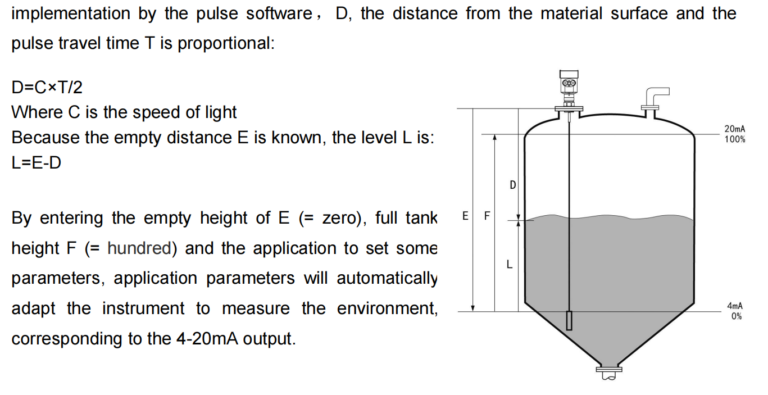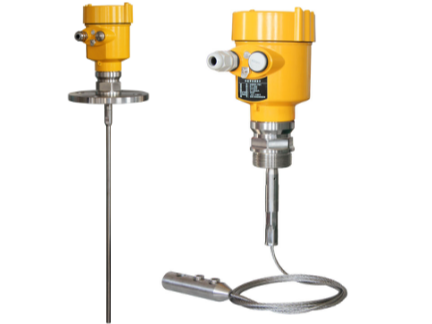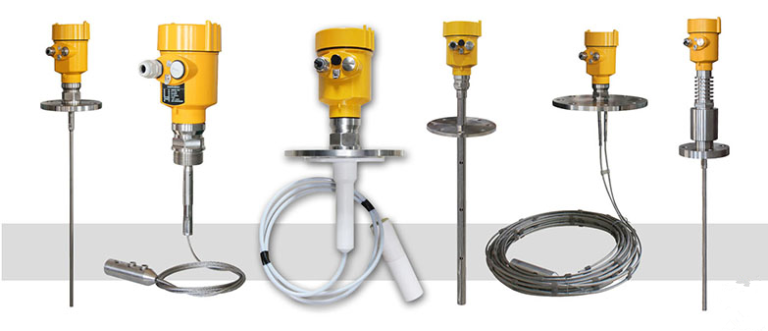High-frequency microwave pulses issued by the guided wave radar propagate along detection components (steel cable or steel rod) and met the media to be measured, since the dielectric constant of the mutation, causes reflections, a portion of the pulse energy is reflected back. Transmit pulse and the reflected pulse is proportional to the distance and the time interval measured media.

The guided wave radar level meter has a flexible process connection form. Engineering generally uses flanges or threads to install on top of the equipment, with the waveguide rod located vertically in the tank, or in the equipment bypass tube. The transmitter can be rotated 360° horizontally to facilitate cable connection and viewing of the meter display. Depending on the characteristics of the medium, a reasonable installation position is chosen to avoid affecting the measurement effect.

For hard rod guided wave radar level meters, the guide rod is inserted vertically into the liquid medium to stabilize the rod. If the guide rod is subjected to media fluctuations during operation, guide rod may move.
If the range is within 0.3m, the guide rod can be fixed. There should be a clearance of at least 5 mm between the guide rod and the bottom of the vessel. the guide rod should not come into contact with the nozzles of the equipment and sufficient installation space is required.
For soft cable guided wave radar level meters, the waveguide cable rod must contact the medium, stabilize the waveguide cable, lead it to the bottom of the vessel and secure it with a weight or bow clamp.
If the metal vessel wall is smooth, the minimum horizontal clearance between the guided wave radar and the inner wall of the device is 100 mm. if the vessel is disturbed, the minimum clearance is larger and should be based on the manufacturer’s data.

Guided wave radar level meters can be used not only for vessels with narrow geometry but also for bypass tubes and tanks of all sizes. Ideally suited to horizontal tanks and other small storage tanks, they are also ideal for underground storage tanks where installation space is limited.
